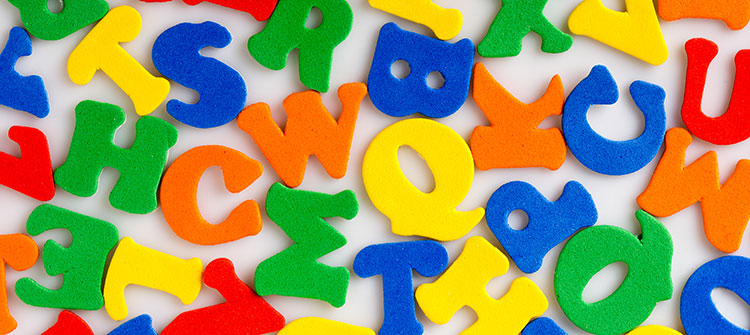We sometimes get questions from SightWords.com visitors who are concerned that their child or grandchild may have a learning disability. Of particular concern is the possibility that their child might have dyslexia.
Many people assume that dyslexia is a visual problem, in which the brain misinterprets what the eyes see. But research has shown that in most cases, dyslexia is an auditory problem. In those situations our
Phonological/Phonemic Awareness curriculum can help a great deal in giving these children the help they need to get ready for learning to read.
So I wanted to take this opportunity to offer some tips.
“My 5-year-old grandson has a lot of signs of dyslexia. He is starting kindergarten and does not recognize all his letters or numbers. We have worked a lot with him. SightWords.com looks like it could help. Are there pictures for words like my, an, etc?”
— Teri
Hi Teri,
Our
Phonological/Phonemic Awareness curriculum is a great place to start with your grandson. I recommend that you start with the
Compound Words module, and then work through the
Syllables activities until he is firm in his understanding of the concepts.
Here are a few other suggestions for you to pursue:
- If your grandson’s school has a speech/language pathologist (SLP), set up a meeting. If the SLP knows the Fast ForWord program, that may help your grandson.
- Consider using Teach your Child to Read in 100 Easy Lessons at home daily.
- Read Overcoming Dyslexia by Sally Shaywitz. It will give you some good information and strategies.
- Buy a set of sandpaper alphabet letters. Have him use his first two fingers of his dominant hand to trace and repeat the names of the letters. Start with letters that look the same in both upper and lower case form (Cc, Ss, etc.). Then have him close his eyes (or use a blindfold) and move his two fingers to trace over the letter and see if he can name it. If he can’t, give him a choice of two, then three, then four to choose from. When he is firm with naming the letters when tracing them, use the same letters without a blindfold, mix them with other letters, point to one he’s traced, and have him name it. Once he’s learned the similar-looking upper-case and lower-case letters, add the dissimilar ones (Hh, Gg, etc.).
- There are no visuals for words like my or an except in sign language. They are high frequency words that can be learned using our sight words teaching techniques after he has learned the names of all the lower-case alphabet letters.
- Send his school a written communication requesting an evaluation to determine if a learning ability is evident. Date it and keep a copy! The request probably won’t be acted upon for a while, but it will put them on notice that you are concerned and why. This will strengthen your case if he continues to have problems that aren’t addressed.
- If there is a tutor trained in Orton-Gillingham methodology in your area, look into hiring that person to help your grandson.


6 Responses to “Is It Dyslexia?”
Christy
Amazing resources! Thank you SO MUCH for making them free and accessible. My third grade son is having difficulty in writing. He writes c, s, 6 backwards and frequently subs in uppercase letters when he should be using lower case letters. He complains how hard and laborious writing is. Do you have any recommendations and/or resources to help stuggling students develop good writing skills?
Sue Corbett
The information you are providing is not accurate. Dyslexia is a neurological issue that a child is born with. It is familial and the characteristics can be identified at an early age. Please read about the science behind this learning disability that impacts so many children in our world.
Ettina
I don’t see anything on this page that contradicts your statement that dyslexia is an inborn neurological issue that is familial and has characteristics that can be identified at an early age. Nor does your statement contradict their assertion that dyslexia is frequently an auditory problem and that specific instruction in phonemic awareness can help kids with dyslexia.
Diane Nusbaum
Is your program / website research based?
ADMIN – Hi Diane,
Yes. The curriculum is research based, following the work of Marilyn Adams’ curriculum, Phonemic Awareness for Young Children and the work of the Florida Center for Reading Research. It has also been classroom tested at around 50 sites here in Georgia that we used to get feedback and improve the curriculum.
AV
This is an exceptionally useful site. I have recommended it to all the teachers in my teaching team
Marc
To Teri and anyone needing an illustration for “my” and “”an”. I suggest a short phrase illustrating what is “my” and “an…” as well as “a” and “the”. First, let’s play with the articles: A and AN can be ANYthing, cue on the letter A. A box. ANY box. AN apple, ANY apple. THE door. THAT door (specific door), or use “exact” with the least ones, as in,”That exact door, no other.” The tree, i.e., the exact tree mentioned.
Illustrations: “My” could show a boy or girl with an object; hugging it would be best. MY cat. MY ball. “An” would similarly be shown combined with a proper illustration: AN apple, AN orange, etc.